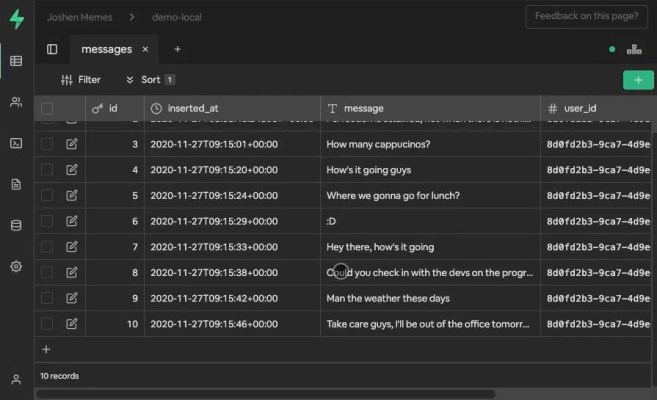Supabase, the backend-as-a-service startup, announced this week that it raised a $30 million Series A.
Supabase is often described as an open source alternative to Google’s Firebase … which is a pretty good way to put it for those who know what Firebase is. For those who don’t: Supabase is a collection of tools that helps developers build projects more quickly by automatically handling a whole lot of the behind-the-scenes work and wiring.
Create a project, and Supabase will give you a Postgres database; an API for interacting with said database that automatically evolves (and documents itself!) as your database changes; a user authentication system that plays friendly with the popular login providers (Facebook, Twitter, Google, Apple, etc.); a storage system for handling things like image and video uploads; and a UI for overseeing and managing it all. It takes a bunch of work you’d need to do to build just about any modern app or service and waves it away with a couple of clicks.
Supabase is free for hobby projects (or when you just want to tinker with it). Once you start needing bigger databases or data backups, the price scales starting at $25 per project per month. Alternatively, you can deploy it yourself, though that’s a bit tougher and currently means losing the management UI.
This Series A comes pretty quickly following the company’s last raise — a $6 million round announced in December 2020. I’m told this round was funded predominantly by Coatue, with some of it reserved for a few new key angel investors, including GitHub co-founder Tom Preston-Werner, PagerDuty co-founder Alex Solomon and Docker co-founder Solomon Hykes.
Supabase co-founder Paul Copplestone tells me that the team is now made up of 24 people, distributed all over the world. “We were born remote,” he said.
This reasoning is twofold: The company started growing just as the pandemic began to spread, and it’s largely hiring people who are already working on and contributing to the tools that make Supabase possible. Why make them move around the world when they’re already doing a good job?
“We use, I think, six different tools,” Copplestone said. “And we employ lead maintainers of several of those tools. We employ open source contributors, anyone who’s contributing, no matter where they live.”
Supabase was part of Y Combinator’s Summer 2020 class, the accelerator’s first cohort to be entirely remote. Meanwhile, YC classes are growing increasingly large; the S20 batch, for example, came in at over 200 companies. It can be hard to stand out in a group like that, but Supabase seemed to do it — I was hearing chatter about them early and often.
Here’s what it looks like to fire up a Supabase backend:
